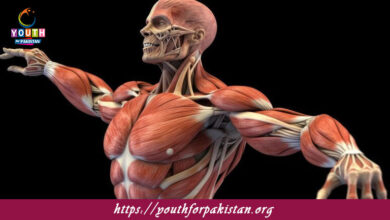Types Of Joints MDCAT Quiz with Answers

Types Of Joints MDCAT Quiz; Joints, also called articulations, are connections of two or more bones of the body with each other. Joints are classified according to their structure and function; the extent of movement they produce varies. Understanding the types of joints is imperative for MDCAT students, as joints play a crucial role in allowing movement, stability, and flexibility. This MDCAT Quiz on the types of joints will help assess knowledge of classification, structure, and the range of movements placed by each type of joint.
Fibrous Joints
Fibrous joints involve bones joined together by dense fibrous connective tissue; there is little, if any, mobility at a fibrous joint. Primarily, they are found where there has to be stability and protection, for instance, sutures in the skull, syndesmoses between some of the bones such as the radius and ulna, and gomphoses binding teeth into their sockets. Questions on the MDCAT Quiz will measure your knowledge of fibrous joint structure and how that limited degree of movement plays into the stability of the entire body.
Cartilaginous Joints
Cartilaginous joints are joints in which the bones are united by cartilage. These joints allow limited movement and are important in providing flexibility and cushioning. There are two types of cartilaginous joints: synchondroses, where the bones are joined by hyaline cartilage (such as in the epiphyseal plates of growing bones), and symphyses, where the bones are united by fibrocartilage (such as in the intervertebral discs and the pubic symphysis). The MDCAT Quiz will test your knowledge of the various types of cartilaginous joints and their functions in supporting movement and shock absorption.
Synovial Joints
Synovial joints predominate in the body, being the most common and the most freely mobile joints found in the body. The main characteristic of the synovial joint is its synovial cavity filled with the synovial fluid that minimizes friction for the joint, thus lubricating it. Such joints are classified into three functional types according to the type of movement they render: ball-and-socket joint, as is the case for the hip or shoulder; hinge, as it is for an elbow or a knee; or pivot, of the atlantoaxial joint that pivots on a single axis like the neck movement. The questions in the MCAT Quiz assess your understanding regarding the structure, types of synovial joints, and what role they perform in various bodily movements.
Quiz on Types of Joints
Taking a MDCAT quiz on types of joints will help one understand the various classifications of joints, such as fibrous, cartilaginous, and synovial joints. The quiz will cover topics on structural characteristics, function, location of each type of joint, and the types of movement they permit. Additionally, using Free Flashcards will help to reinforce your understanding of the types of joints, making it easier to recall key concepts during your MDCAT exam.

An example of a ________ joint is the joint between the atlas and axis of the cervical spine.
Pivot joint

The temporomandibular joint allows movement in multiple planes and is a ________ joint.
Hinge and gliding joint
Experience the real exam environment with our expertly designed collection of over 25,000 MCQs MDCAT Mock Tests.





